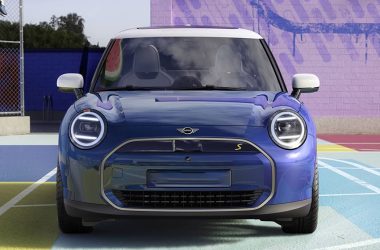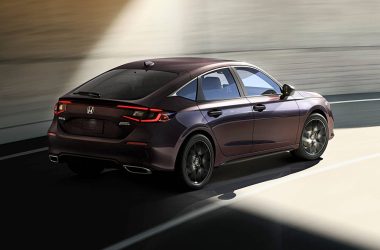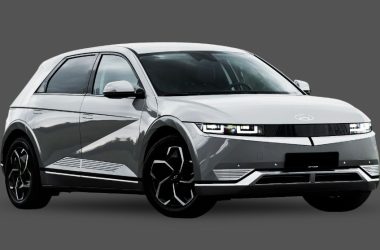If you’re in the market for a new compact car, the Mazda 3 is likely on your shopping list. Mazda’s popular small car comes in both sedan and hatchback body styles, leaving many buyers trying to decide which version to get.
Price Difference
One of the first considerations is usually price. The Mazda 3 hatchback typically costs $1,500-$2,000 more than an equivalent sedan. For example, a base 2023 Mazda 3 sedan starts at $22,550, while the hatchback starts at $24,125. Higher trims can see a $2,500 price difference or more.
This price premium for the hatchback exists across most model years and trim levels. It reflects the increased manufacturing costs of the hatchback’s unique body style. Buyers will have to decide if the utility of the hatchback is worth the extra cost over the sedan.
| Model | Sedan Starting MSRP | Hatchback Starting MSRP | Price Difference |
|---|---|---|---|
| 2023 Mazda 3 | $22,550 | $24,125 | $1,575 |
| 2022 Mazda 3 | $21,445 | $23,045 | $1,600 |
Exterior Styling
Opinions on the exterior styling of the sedan versus hatchback are subjective. Some buyers prefer the look of one over the other. From the side and front, the two body styles share the same sleek and elegant design language. The main styling differences are in the rear.
The current 4th generation Mazda 3 hatchback has a more rounded, bulbous rear liftgate area. Some find it gives the hatchback a fun, sporty look. But others feel it looks a bit awkward or heavy compared to the sedan. The sedan has a more traditional trunk design that many think appears cleaner and more upscale.
In the end, styling preference will come down to personal taste. Those who like a more practical but playful look may prefer the hatchback. Buyers wanting a more mature, refined profile may opt for the sedan. It’s worth seeing both in person to judge which rear design you favor.
Exterior Dimensions
Despite the different rear shapes, the sedan and hatchback ride on the same platform. They share identical dimensions for length, width, wheelbase and front/rear track width. The only difference is in height, with the hatchback sitting 1-2 inches taller overall.
| Dimension | Sedan | Hatchback |
|---|---|---|
| Length | 183.5 in | 183.5 in |
| Width | 70.7 in | 70.7 in |
| Height | 56.9 in | 57.3 in |
| Wheelbase | 107.3 in | 107.3 in |
Cargo Space
The key practical difference between the two body styles is cargo room. The hatchback offers much greater versatility in transporting larger, bulkier items with its squared-off liftgate.
When the rear seats are up, the sedan actually provides more maximum cargo volume. The latest Mazda 3 sedan has 13.2 cu-ft of trunk space, vs 20.1 cu-ft for the hatchback. But the hatchback’s cargo area is taller and easier to load large boxy objects into.
Folding the rear seats down is where the hatchback pulls far ahead in cargo utility. It provides 39.4 cu-ft of space, versus 34.4 cu-ft in the sedan. The wider, boxier dimensions of the hatchback make it better suited to hauling furniture, outdoor gear, pets and other sizable loads.
So while the sedan offers a bit more everyday luggage room, the hatchback is ultimately much more versatile. Buyers who regularly need to transport larger items will appreciate the hatchback’s practicality.
Interior Room
In terms of interior passenger and cargo dimensions, the Mazda 3 hatchback and sedan are nearly equal. Front and rear legroom, shoulder room and headroom are identical in both body styles.
The rear seats in the hatchback do sit about 1 inch higher than the sedan. This slightly reduces the perception of spaciousness for rear passengers. But actual measurements indicate the usable rear seat dimensions are the same hatchback versus sedan.
Performance
Sedan and hatchback models utilize the same Skyactiv-G 2.0L and 2.5L four-cylinder engines. Available transmissions are also identical between the two body styles.
This means acceleration, fuel economy and driving dynamics are virtually equal in the Mazda 3 sedan and hatchback. The only minor performance difference is the hatchback weighs just 55-110 lbs more than an equivalent sedan. This slightly affects agility and efficiency but most drivers are unlikely to notice.
In summary, those considering performance won’t find a clear winner between body styles. Sedan or hatchback, the Mazda 3 delivers an equally sporty and satisfying drive.
Fuel Economy
| Sedan MPG | Hatchback MPG | |
|---|---|---|
| City/Highway: 2.0L Engine | 28/37 | 27/35 |
| City/Highway: 2.5L Engine | 25/35 | 25/34 |
Tech Features & Options
Mazda 3 sedan and hatchback models come well equipped with the latest tech and convenience features. Available amenities like the Mazda Connect infotainment system, head-up display, Bose audio and advanced safety gear are identical between the two body styles.
In terms of features, options and modern appointment, buyers will find both sedans and hatchbacks offer a refined, upscale experience. Tech goodies won’t be a determining factor between the two.
Common Standard Features
- Mazda Connect infotainment with 8.8″ display
- Android Auto/Apple CarPlay
- Advanced keyless entry
- Push button start
- Leather-wrapped steering wheel
- Auto climate control
- 8-speaker audio system
- Blind spot monitoring
- Rear cross traffic alert
Available Options
- 12-speaker Bose audio
- Satellite radio
- Moonroof
- Heated/ventilated seats
- Heated steering wheel
- Head-up display
- 360-degree camera
- Front and rear parking sensors
When it comes to luxury features and appointments, the Mazda 3 sedan and hatchback are evenly matched. Shoppers can equip either body style to their desired spec.
Safety Ratings
The Mazda 3 earns high marks for safety, with sedan and hatchback designs achieving identical crash test ratings. Both body styles have a 5-star overall rating from the NHTSA and a Top Safety Pick + designation from the IIHS when equipped with certain headlights.
In terms of protective structural design and advanced driver aids, the Mazda 3 hatchback and sedan are comparable. Those prioritizing safety should feel confident choosing either the sedan or hatchback.
Crash Test Ratings
| Test | Sedan Rating | Hatchback Rating |
|---|---|---|
| NHTSA Overall | ★★★★★ | ★★★★★ |
| IIHS Overall | Top Safety Pick+ | Top Safety Pick+ |
Visibility & Blind Spots
One notable difference between the sedan and hatchback is outward visibility. The sloped rear roofline and large C-pillars of the hatchback create much larger blind spots than the more upright sedan.
Drivers may need more time to adjust to checking the hatchback’s blind spots when changing lanes. Carefully adjusting side mirror angles can help minimize this issue. Still, the pillar design does make the sedan easier to see out of by comparison.
For parallel parking, the sedan also offers better rearward visibility. This is where the more vertical trunk design gives it an advantage over the sloped hatchback rear.
On the plus side, hatchback models starting in 2020 include a standard rear view camera and available 360-degree cameras. So modern camera tech does offset some of the hatchback’s vision drawbacks.
Resale Value
Historically, Mazda 3 hatchback models have tended to hold their value slightly better than sedan counterparts. Data shows 1-5 year old used hatchbacks selling for $500-$2,000 more than sedans of similar age and condition.
This resonates with the hatchback’s reputation for practicality and versatility. The body style seems to carry more cachet among used car buyers.
However, hatchback and sedan resale values are close enough that this shouldn’t be a primary deciding factor. Focus instead on which body style suits your needs and preferences while owning the vehicle.
Our Recommendation
So which is better, the Mazda 3 sedan or hatchback? There are good arguments for both body styles. Each has its strengths and minor trade-offs.
The sedan offers sleek styling, a modest price advantage and slightly better visibility. But the hatchback provides much greater cargo versatility along with a more youthful, energetic presence.
We recommend taking both for test drives back to back. Focus on rear visibility, ease of loading cargo, and which design resonates with you more. This hands-on experience should make your decision clearer.
For most shoppers, we think the hatchback’s unique style and added practicality make it worth the small premium over the sedan. But drivers who value the sedan’s refined profile and don’t haul larger items may still prefer it.
Overall the differences are minor between the two body styles. Opt for the Mazda 3 hatchback if maximum cargo space is important. But those focused on value and a classy look can’t go wrong with the sedan either.
Common Questions
Here we’ll address some other common questions that arise for shoppers deciding between the Mazda 3 sedan and hatchback.
Which is quieter inside?
The sedan is slightly quieter inside than the hatchback, particularly from road noise intruding from the rear. The hatchback’s cargo area is more exposed with less sound insulation from the cabin. But both body styles are reasonably quiet by compact car standards.
Which handles better?
In terms of ride and handling, there are only minor differences between the two. The hatchback’s extra weight gives it a bit more planted feel through turns. But otherwise handling is similarly responsive and agile in both the sedan and hatchback.
Which has the bigger gas tank?
The sedans and hatchbacks share the same 13.2 gallon fuel tank size. Driving range is similar between the two.
Which offers more trunk space?
The sedan has more maximum trunk space with the rear seats up (13.2 cu-ft vs 20.1 cu-ft). But the hatchback is much roomier with the rear seats folded down (39.4 cu-ft vs 34.4 cu-ft).
Which holds value better?
The hatchback historically has slightly higher resale value. But retention values are close enough between the two that it shouldn’t be a major factor.
Which has more aftermarket parts available?
The hatchback generally offers a few more exterior styling upgrades from the aftermarket. But both models have access to popular upgrades like intake and exhausts systems.
Which is easier to park?
The sedan’s superior rear visibility gives it an advantage for parallel parking. But both models offer excellent forward visibility and available parking aids.
Which has a bigger back seat?
Rear seat dimensions are nearly identical in terms of legroom, shoulder room and headroom.
Which is better for tall drivers?
Again, the driver’s seating dimensions are the same between the two. Those over 6 foot tall should find either model accommodating.
Which is better for car seats?
Rear seat space is comparable, so car seat fitment will be similar. The sedan does offer easier access to rear seats thanks to its longer doors.
Which has a biggersunroof option?
The available moonroof is identical in dimensions between the sedan and hatchback.
Which is best for snow driving?
The hatchback’s rear wiper (if equipped) makes clearing snow buildup easier. But otherwise snow traction depends more on your tire choice.





